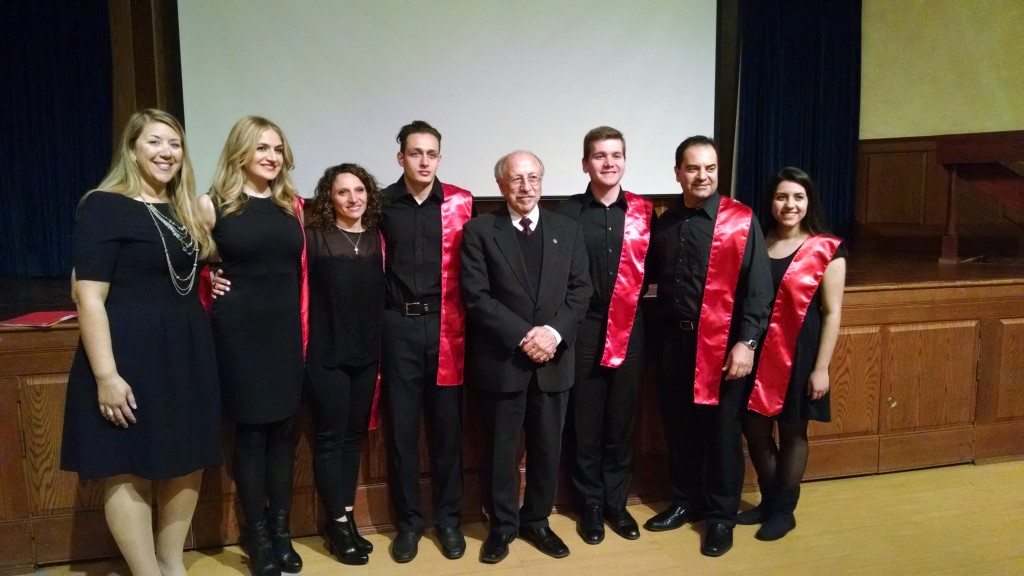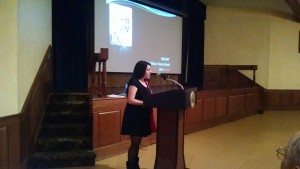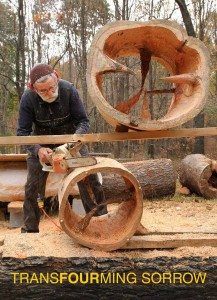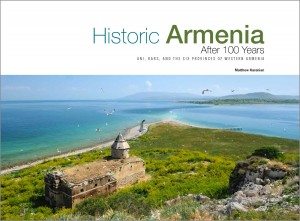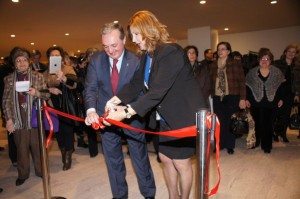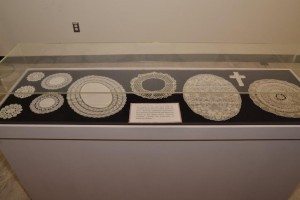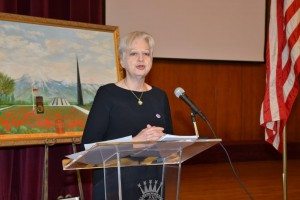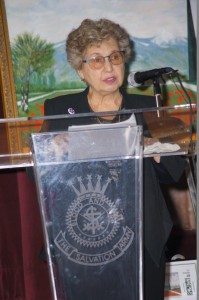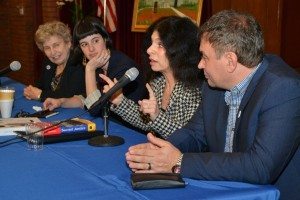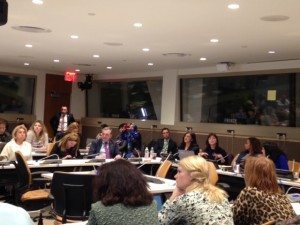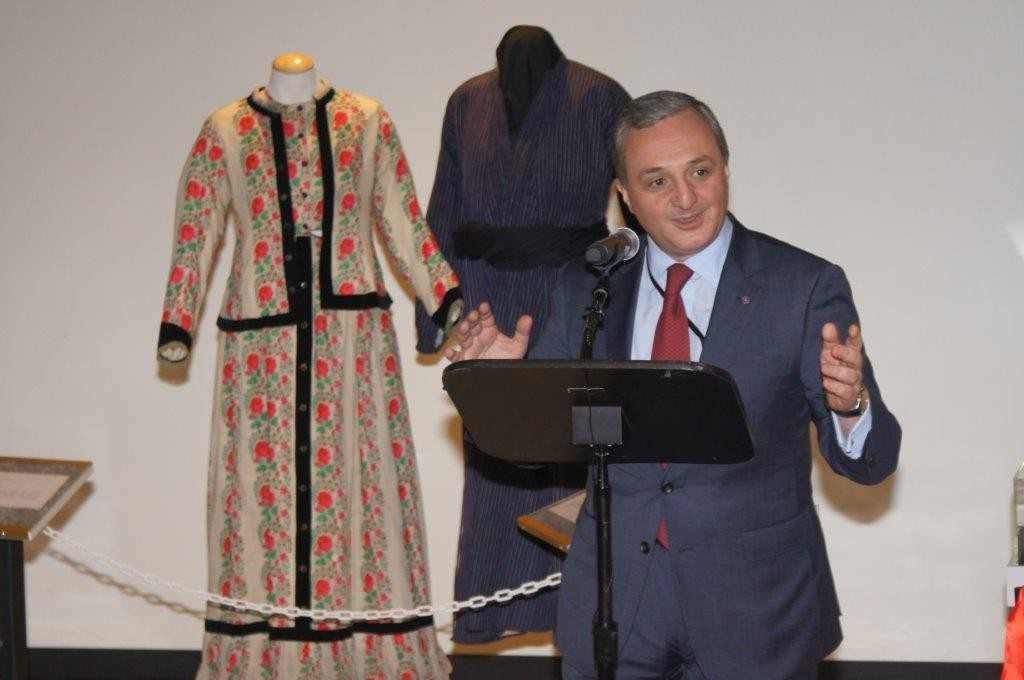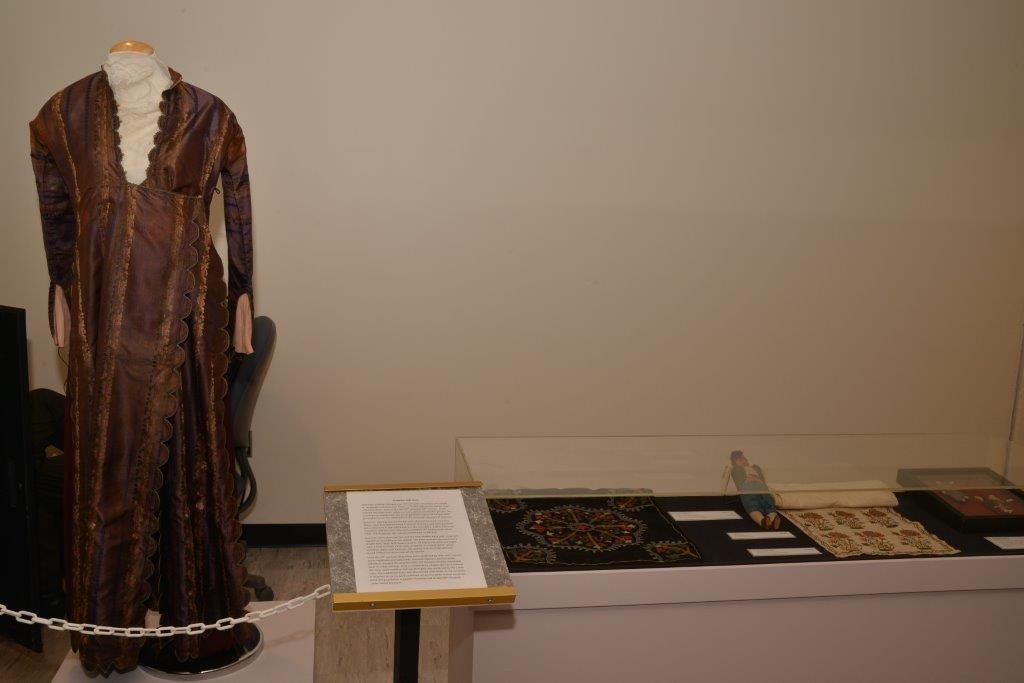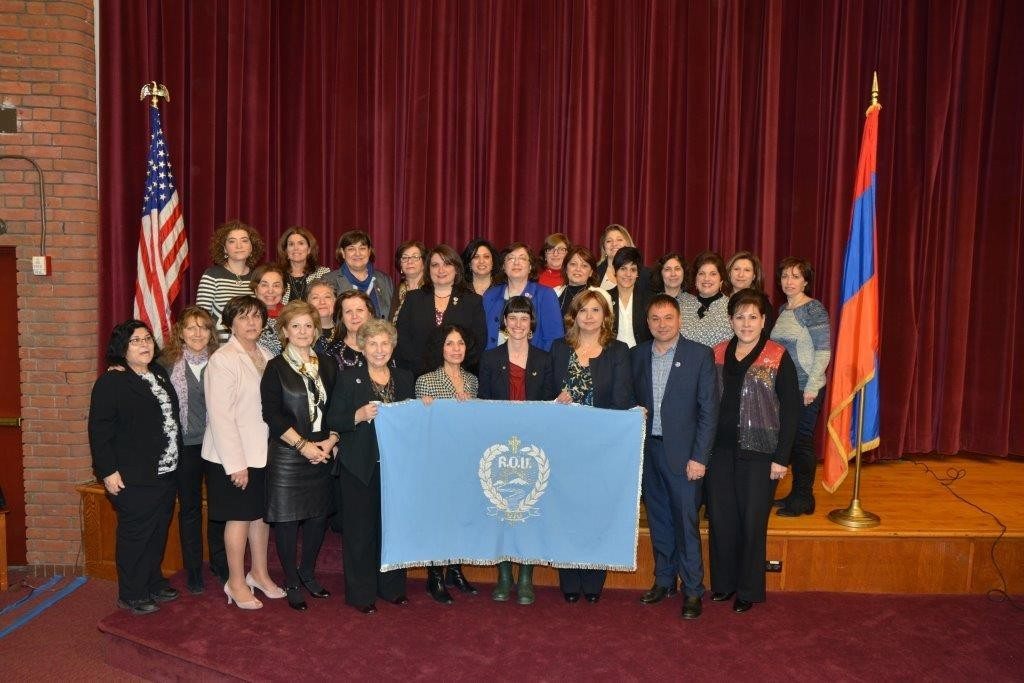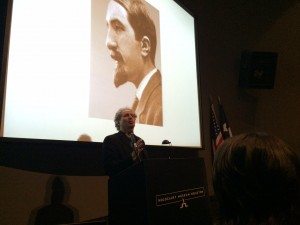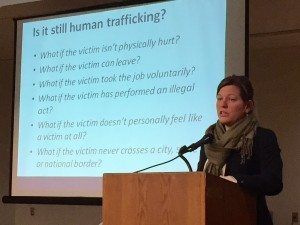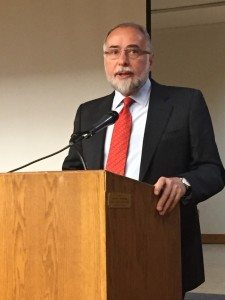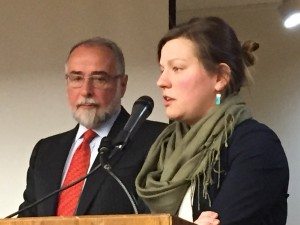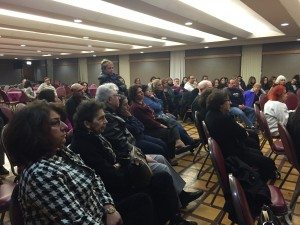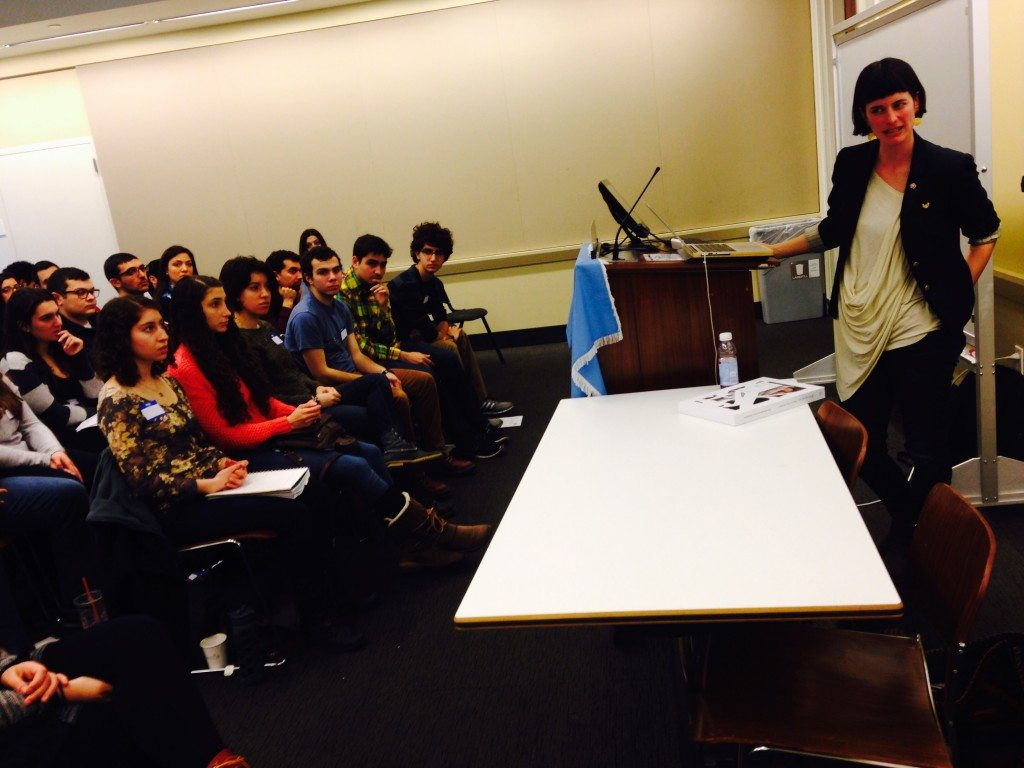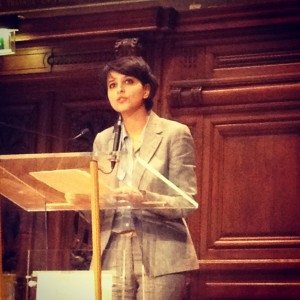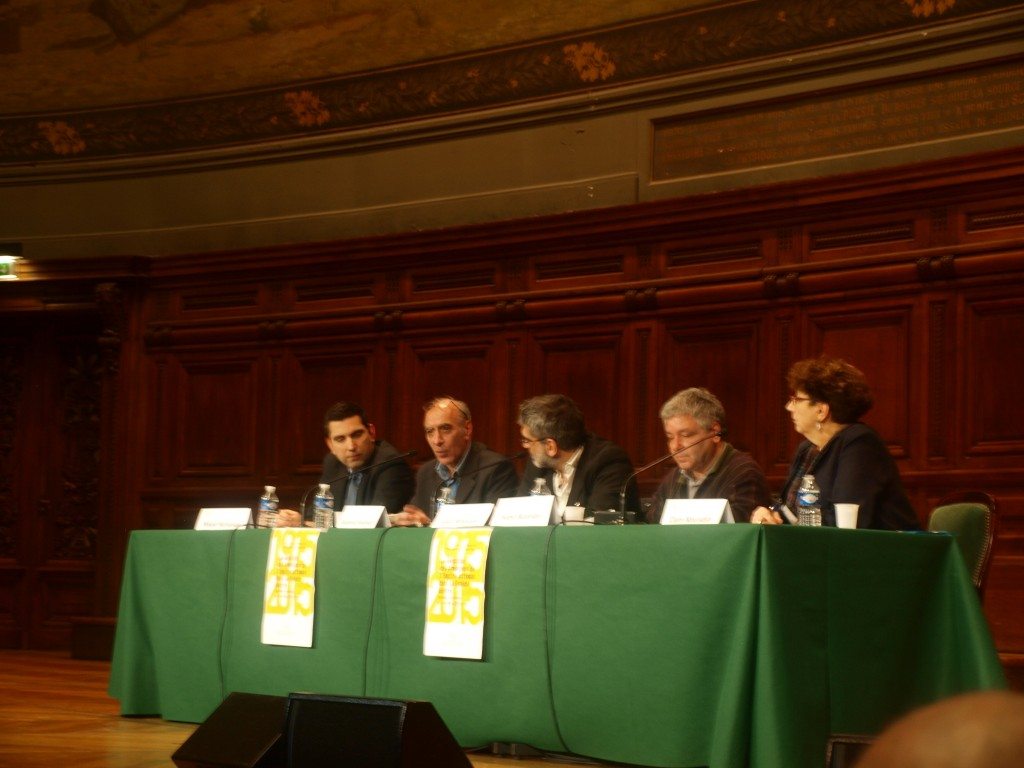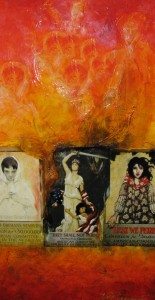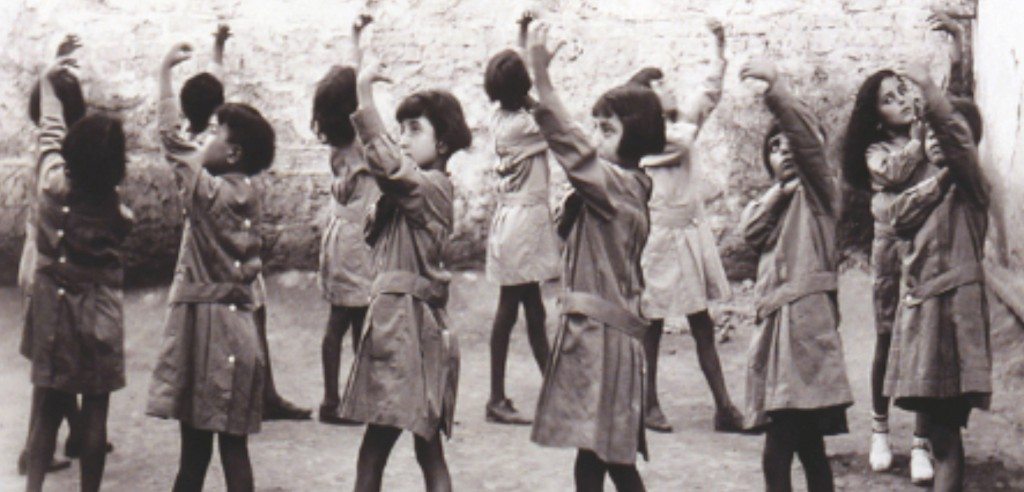NEW YORK—More than 200 women traveled from all over the United States and as far away as Europe, Canada, and South America to attend and participate in a series of events initiated by the Armenian Relief Society, Inc. (ARS) to commemorate the Centennial of the Armenian Genocide. The ARS is the oldest Armenian women’s organization in the world, with entities in 26 countries and a membership of 15,000. Beginning on March 5, the week-long succession of events featured the opening of an exhibition at the United Nations (UN), as well as lectures, forums, dinners, and visits to various landmarks in “the city that never sleeps.”
![Amb. Mnatsakanyan and Marachelian cut the ribbon, officially opening the exhibit.]()
Amb. Mnatsakanyan and Marachelian cut the ribbon, officially opening the exhibit.
On Thurs., March 5, an extraordinary exhibit at the United Nations headquarters, co-organized by the Permanent Mission of the Republic of Armenia to the UN and the ARS, Inc., showcased the unique and treasured “Handwork of Armenian Women: Stitching to Survive.” Among the special guests attending were Vicar General of the Eastern Prelacy Bishop Anoushavan Tanielian, Armenia’s UN Ambassador Zohrab Mnatsakanyan, ARS Central Executive Board (CEB) Chairperson Vicky Marachelian, ARS United Nations NGO Committee Chairperson Valentine Berberian, and representatives of various organizations. Also in attendance were several members of the ARS CEB, ARS Eastern and Western USA regions, ARS Canada, and ARS South America, along with the ARS UN coordinator.
The exhibit showcased exquisite heirloom pieces from the Armenian Museum of America curated by Susan Lind-Sinanian, and illustrated the artistry, technical skills, and cultural artistry of Armenian women in the last 100 years. On exhibit were exquisite laces, embroidery, crochet, and needlework, as well as clothing and accessories.
Calling the ARS “an exceptional society of devoted women, and a miraculous feminine force, dedicated to humanitarian endeavors,” Ambassador Mnatsakanyan briefly traced the ARS’s history, which “emerged from the crucible of oppression and made the daunting journey from the old world to the new, from immigrant to citizen, from refugee to worker, from dependence to self-reliance.”
“The needle,” Mnatsakanyan said, “represented freedom and economic independence for Armenian women and
![Needlework displayed at the exhibit]()
Needlework displayed at the exhibit
girls,” and paid tribute to their “magnificent artistry, technical skill, and cultural expression, while echoing the trauma of the unspeakable atrocities and deportations they experienced.” He paid tribute to those Armenian grandmothers and great grandmothers who worked endless hours to produce the beautiful works to support their families. “These immigrants survived, and their national identity was remolded to a new land where peace and prosperity were more than just a dream, a land where 105 years ago, the foundations of the Armenian Relief Society would be set, followed by more than a century of ongoing service to the needy.”
He also noted that the ARS, as an Economic and Social Council (ECOSOC) accredited NGO at the UN, is participating in the 59th Conference of the Commission on the Status of Women (CSW59).
Marachelian then spoke about the “multi-faceted role of Armenian women emerging from the crucible of oppression. Displayed in this exhibit is the precious handwork of 10 decades. It is an exceptional example of Armenian artistry and noble sisterhood,” she related with pride. The event’s highlight came with the cutting of the red ribbon by Mnatsakanyan and Marachelian, officially opening the exhibit, which was on display at the United Nations for dignitaries and personnel, as well as UN visitors, through Fri., March 13.
Rebuilding a nation
On Friday, an all-day conference entitled, “Rebuilding a Nation: The Armenian Woman’s Century of Resistance and Empowerment,” organized by the Armenian Genocide Centennial Committee of the Armenian Relief Society, took place at the Salvation Army headquarters in New York. Following a moment of silence in honor of those who perished in the Armenian Genocide, initiated by ARS CEB member, Caroline Chamavonian in her opening remarks, CEB member Pauline Getzoyan warmly welcomed the overflow crowd, and recounted the “Armenian woman’s indelible contribution to the survival of our nation and culture. We honor the inspirational women who led the way before us.”
![Dr. Eleni Theocharous]()
Dr. Eleni Theocharous
Topping the list of prominent speakers was Dr. Eleni Theocharous, an Associate Professor of Pediatric Surgery in Cyprus, and head of the Department of Pediatric Surgery at the Achellion Hospital in Limassol, Cyprus. She has been a member of the European Parliament since 2009, and is the leader of the European Union-Armenia Friendship Group. Her impressive background also includes membership in the Cypriot House of Representatives, Amnesty International, the Ad-Hoc Committee for the Promotion of Peace and Collaboration in the Middle East, and the Cyprus-Armenian Association (as president). A noted human rights activist, she has worked in several developing countries, including Armenia, Lebanon, and Syria. Since 1991, the distinguished physician and parliamentarian has made more than 30 trips to Artsakh (Karabagh), including 20 during the war and ceasefire, to help rebuild the pediatric hospital, and help with school reconstruction and agricultural production.
Starting her address describing the “common principles and values of freedom, courage, dignity, pride, and self-determination” that Greeks and Armenians share, Theocharous proudly declared, “Today I feel 100 percent Armenian, because you gave me the opportunity to participate, to live through and identify myself with the epic struggle of the Armenians for liberty and independence.” She called the Artsakh struggle a “victory of the Armenian people against the bondage of tyranny and criminal indifference of the powerful of the planet.”
Thanking the ARS, she said, “Women are the core-pillar” of this and other Armenian battles, including in the fields of education, art, medicine, infrastructure, democracy, and human and social rights. The Armenian nation has undergone a number of genocides, with women and children being the main victims of violence, she continued. “We are shocked by the brutality of the genocide, and it fills us with horror that, 100 years later, the brazen and aimless Turkish state continues the same policy against the Kurds.”
A powerful plea and promise
Making a powerful plea, Theocharous stated, “Please save the Melkonian School in Cyprus. It is a monument of the genocide, and of equal importance to the one in Dzidzernagapert in Yerevan.” This request brought on thunderous applause.
Concluding her inspiring remarks, Theocharous declared with passion and obvious emotion, “As long as Turkey denies the genocide, the Turks will remain in the collective consciousness of nations as slaughterers. I promise you that as long as I am alive, Turkey will not join the European Union unless it becomes a civilized country and recognizes the genocide.” The audience swept to its feet, giving her a standing ovation lasting several minutes.
![Dr. Isabel Kaprielian-Churchill presents “Needle, Thread and Cloth: The Art of Survival”]()
Dr. Isabel Kaprielian-Churchill
Dr. Isabel Kaprielian-Churchill, Emerita, professor in the California State University (Fresno) History Department, brought to life the world of “Needle, Thread and Cloth: The Art of Survival,” when thousands of Armenian women and girls, by fashioning beauty and power, “made art the savior of our nation,” during the late 19th and 20th centuries. This extraordinary work was commercialized by American missionaries in Ireland and Germany. Using slides to display this exquisite handiwork, Kaprielian-Churchill explained how handkerchiefs, doilies, altar pieces, and even sweaters and other accessories, made from areas such as Anjar, Urfa, and Aintab, were sold in Europe and the U.S. and “helped Armenians to survive before 1914.”
Before the genocide, many of these unique artworks, especially those with crosses, were pillaged and burned, after gems and gold threads were removed. They were put on display as Turkish art, since Armenian women did not sign their work. After the genocide, the making of tapestries, embroideries, and rugs was partially revived in Aintab, Marash, Urfa, and Sepastia. Near East Relief sold these crafts in the Middle East, the Caucasus, Europe, and the U.S., and used the money to partially support the orphanages. With obvious emotion Kaprielian-Churchill emphasized the themes of this art, which symbolize the women’s resistance to the genocide, survival, and the preservation of our historical techniques. “It was big business with a cultural touch.” Today, these arts are kept alive in Armenia, Syria, Lebanon, and Iran. “Speaking through the needle today is not for economic survival, but for cultural survival,” she said.
Scout Tufankjian, a photojournalist who spent four years traveling to more than 20 countries to document images of Armenian communities, which resulted in the book, There is Only the Earth – Images from the Armenia Diaspora Project, said she wanted to find out what it meant to be an Armenian. “I was angry that books by non-Armenians were writing that the Armenians are no longer here. I wanted to tell the story of survival, not just victimhood. No matter where we live, we’re connected.” Tufankjian also emphasized the powerful role Armenian women have played in that connection and survival.
Dr. Marian Mesrobian MacCurdy, a retired professor and chair of the Writing Department at Ithaca College, revealed
![(L-R) Dr. Isabel Kaprielian-Churchill, Scout Tufankjian, Dr. Marian Mesrobian, and Bared Maronian]()
(L-R) Dr. Isabel Kaprielian-Churchill, Scout Tufankjian, Dr. Marian Mesrobian, and Bared Maronian
that her grandfather, Aaron Sachaklian was one of the three leaders of “Operation Nemesis.” She related the life story of her grandmother, Eliza DerMelkonian Sachaklian, a founding member of the ARS in America, who was a survivor of the harrowing 19th-century Hamidian Massacres and the 1909 Adana Massacres. Like many Armenian women, she supported her family with her needlework skills, which she passed on to her daughter. In her book, Sacred Justice: The Voices and Legacy of the Armenian Operation Nemesis, Mesrobian MacCurdy related this courageous story of tenacity and stubbornness, stressing that women were just as important as the men in the struggle.
Bared Maronian, the executive producer of Armenoid Production, and four-time Regional Emmy Award-winner, has worked on many films, including PBS documentaries. His latest work, “Orphans of the Genocide,” has been shown in film festivals, translated into a number of languages, and won several awards. An audience of 12 million has already seen it on PBS stations. His aim is to increase the audience viewership by the end of 2015 to 100 million in recognition of the Centennial.
His current work, “Women of 1915” will document the plight of Armenian women during the genocide, and the non-Armenian women who came to their rescue. It will explore the question, “What is an Armenian Woman?” Featured notables will include the first Ambassador of Armenia to Japan Diana Apka; Hollywood movie star Lori Mardiganian; Partridge family granddaughter Barbara Johnson, who opened a school and orphanage in Sepastia; Danish missionaries Karen Jeppe and Maria Jacobsen, the founder of Bird’s Nest; and hang-glider Marilyn Hamilton. The film is scheduled to premiere in the New York area in November 2015. Maronian said the ARS Eastern Region has been a major sponsor of “Women of 1915,” and expressed his appreciation for its support.
Accenting the inspiring lectures was a symbolic sculpture of a genocide victim’s face with hollow eyes and an open, shrieking mouth by artist Marla Mekjian. It was reminiscent of legendary artist Edvard Munch’s painting entitled “SCREAM.” Armineh Minassian recited “A Handful of Ash” by the famed poet Siamanto, bringing many to tears.
‘Women and diaspora: from past to post-2015’
![Panel on the role of diasporan women, moderated by Nanore Barsoumian]()
Panel on the role of diasporan women, moderated by Nanore Barsoumian
On March 9, the Permanent Missions of Armenia and Cyprus to the United Nations, in partnership with the ARS, the University of the Highlands and Islands, and the Diaspora African Women’s Network (DAWN), held a side event on the margins of UN CSW59 on to discuss the role of diasporan women. Moderated by Nanore Barsoumian, the editor of the Armenian Weekly, the panel included ARS member Nora Simonian, representing Armenian Diasporan women. “Armenian women have always played an important role throughout history,” Simonian said. “During the past 100 years, Armenian Diaspora women have taken on the monumental responsibility of not only forming and sustaining their families but also preserving the Armenian identity and culture within their families and communities, no matter which host country they settled in.”
“Diaspora women share the responsibilities of the social and economic development of Armenian women worldwide so that they may continue to play a crucial role in preserving the Armenian culture and traditions in post-2015,” she added. The theme of this panel was a fitting conclusion to the commemorative events, honoring the role of the Armenian woman before, during, and after the genocide.
![Ambassador Zohrab Mnatsakanyan]()
Ambassador Zohrab Mnatsakanyan
![Clothing displayed at the exhibit]()
Clothing displayed at the exhibit
![A group shot of the participants of the symposium titled ‘Rebuilding a Nation: The Armenian Woman’s Century of Resistance and Empowerment’]()
A group shot of the participants of the symposium titled ‘Rebuilding a Nation: The Armenian Woman’s Century of Resistance and Empowerment’
The post ARS Centennial Events in NY Feature Historic Exhibition appeared first on Armenian Weekly.
